By Kristen M. Janicki, MS, PAS
The Mid-South Eventing and Dressage Association welcomed Missy Ransehousen on August 21-22nd at Masterson Station Park in Lexington, Kentucky. Missy has made her own mark on the equestrian world through her chosen sport of eventing. Many would view her to have an obvious advantage of growing up with an Olympic legend (her mother, Jessica), but proving herself in this sport has been based on hard work & dedication. When you grow up in the shadow of a three-time Olympian, you work hard, develop your own style, and choose what you love the most: coaching & eventing!
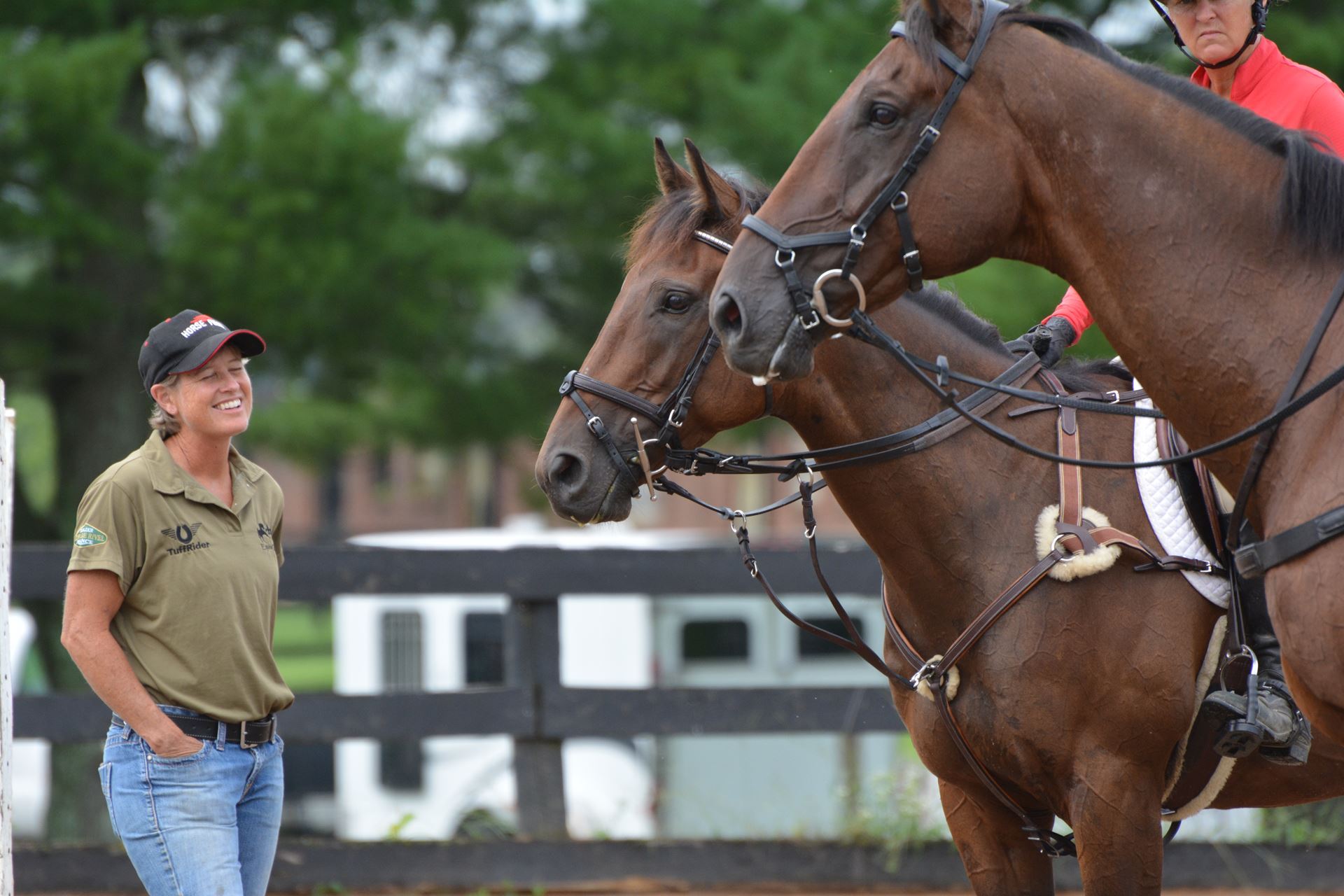 Photo by Erica Spradling
Photo by Erica Spradling
Saturday's Dressage Lessons
Day one began with individual dressage lessons at the Dressage Complex under cloudy and sometimes rainy skies. Tiffany Smith and the lovely bay gelding Indigenous Gent (currently competing at the preliminary level) took to the sandbox first. Missy and Tiffany joked about her horse “assuming the position” in dressage, so they took to challenging him to take his frame outside of his comfort zone. After a brief warm-up, Missy instructed Tiffany to canter a 20-meter circle in the center of the ring, working on stretching the horse’s head and neck downwards. Keeping him supple through his jaw will his body to follow suit. “This horse doesn’t need to be low in his frame but should be through,” Missy said.
 Photo by Kristen Janicki
Photo by Kristen Janicki
Then, staying on the circle in that downwards stretch, Tiffany worked on bending him to the outside for several strides, allowing him to straighten and then bending to the inside. By straightening her upper body, Tiffany brought Indy’s head and neck up. “If, when you lift, he starts bracing, bring his head and neck back down and ask again,” Missy explained. She encouraged Tiffany to keep the canter swinging, and, if it starts to feel up and down, push forward for a bigger stride.
 Tiffany Smith. Photo by Kristen Janicki
Tiffany Smith. Photo by Kristen Janicki
Tiffany also admitted that riding the corners are a challenge for her, so Missy reminded her to keep her eyes and chest up to prevent the upper body from tipping forward in the corners. Instead of using her inside lower leg to support and bend the horse’s body, Tiffany should close her inside thigh with steady lower leg contact.
Beginner novice level riders, like Claire Mulhollem and Anastacia Curwood, worked to create a steady rhythm throughout the three gaits. At the trot, Missy had them work off the rail and leg yield over on the long side, using their legs and body to move the horse rather than directing with the reins.
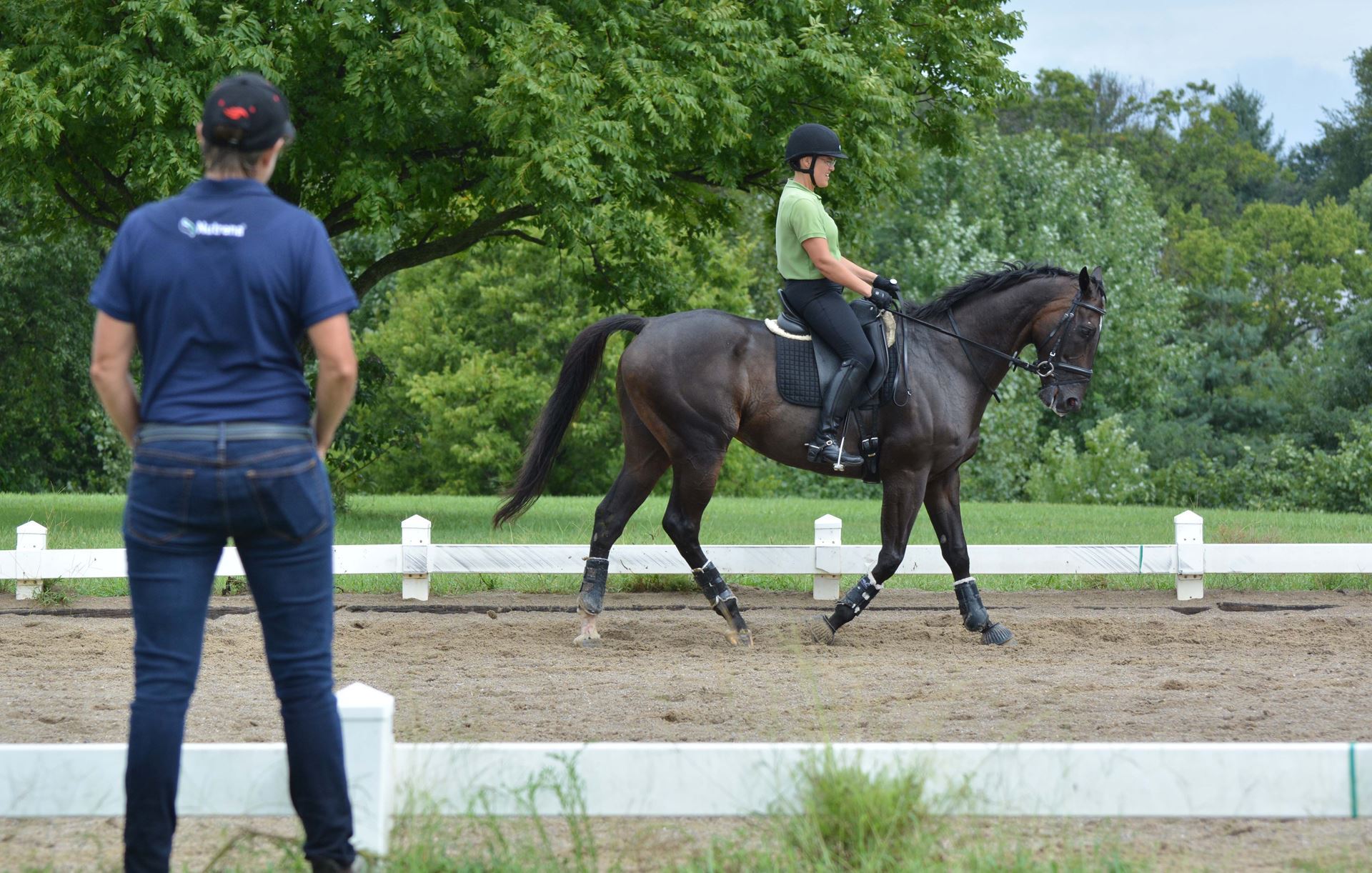 Anastasia Curwood. Photo by Kristen Janicki
Anastasia Curwood. Photo by Kristen Janicki
To improve your horse’s walk, Missy suggests stretching your leg downwards and be conscious of your position in the saddle, sitting tall. If you are wearing spurs, turn your toe outwards keeping your legs long rather than shortening your lower leg position. Riders should “feel your horse’s hind legs stepping underneath them,” Missy said.
Sunday’s Stadium Jumping
Beginner Novice
Beginner Novice group, consisting of Sharon Anthony and Claire Mulhollem, worked on creating a steady rhythm to the fences either at a trot or canter and keeping the same rhythm throughout their courses. For Sharon, Missy wanted her to think about keeping her eyes and chest up with her weight in her heels. This helped to create better balance over the fence itself.
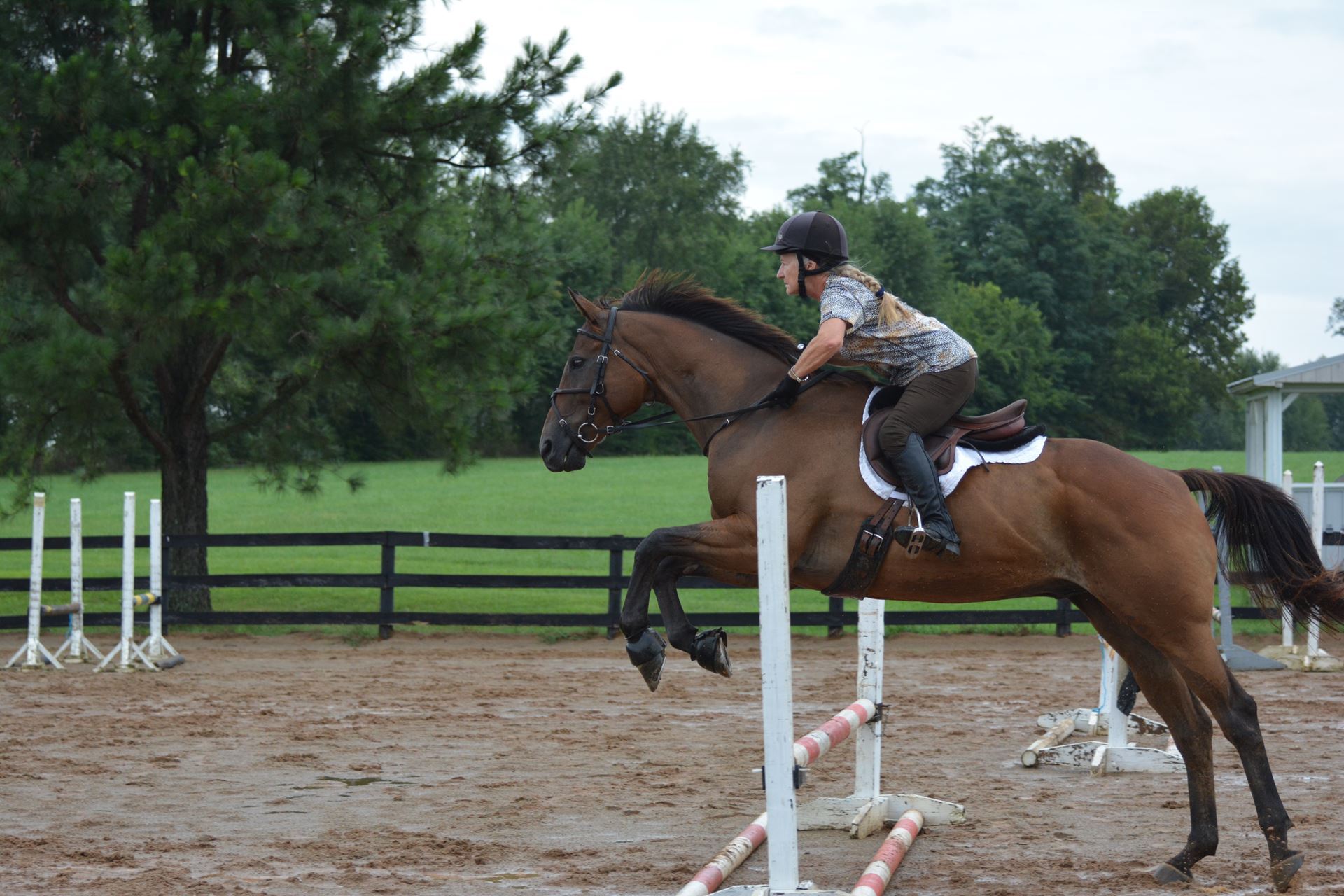 Photo by Erica Spradling
Photo by Erica Spradling
Claire’s big mare tends to get very enthusiastic about jumping and the key element to controlling that energy included maintaining a steadier canter to the fences. Staying centered to the fence, especially off of a turn, requires preparation. Making sure the horse remained on the aids helped Claire prepare for the fence ahead.
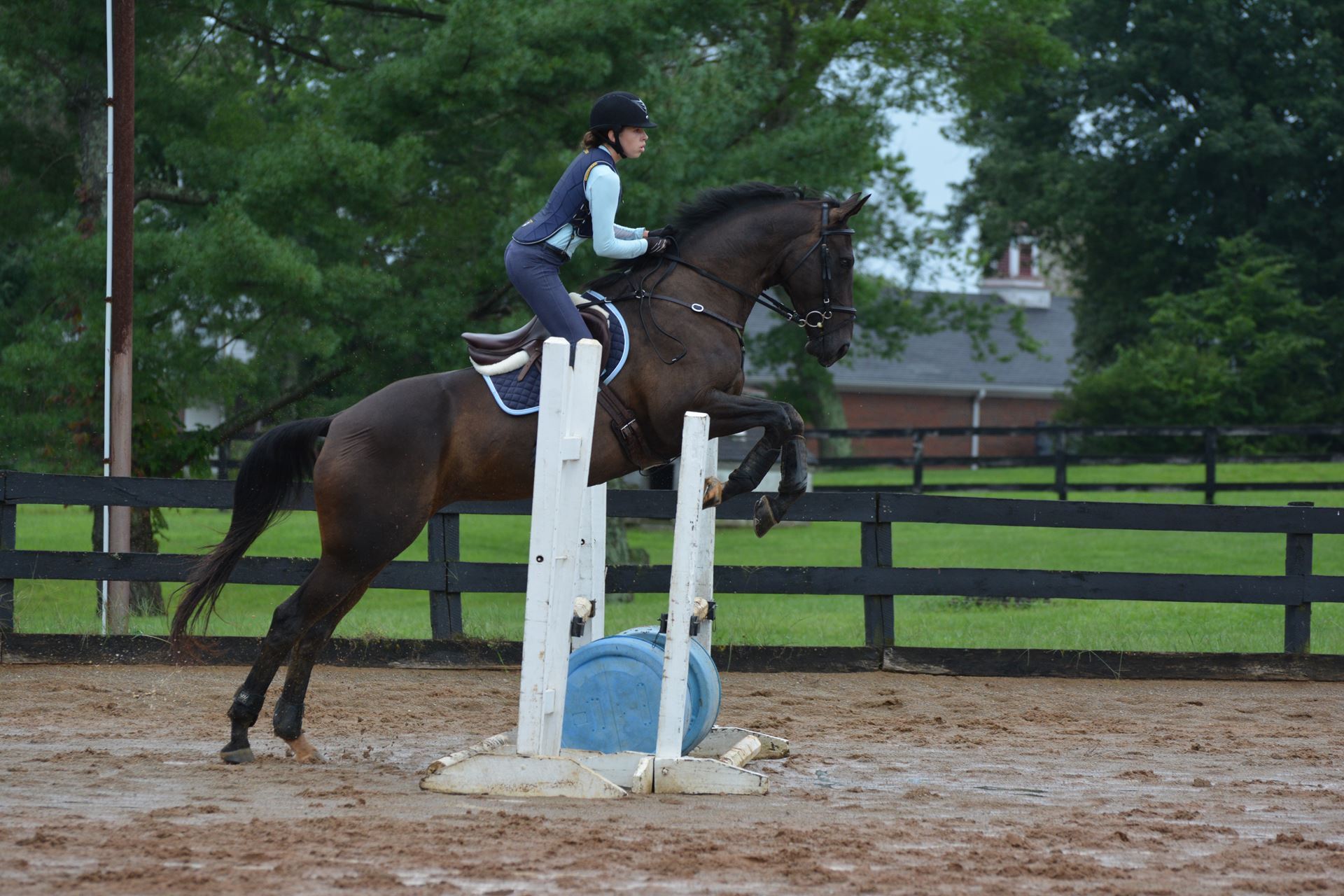 Photo by Erica Spradling
Photo by Erica Spradling
Training
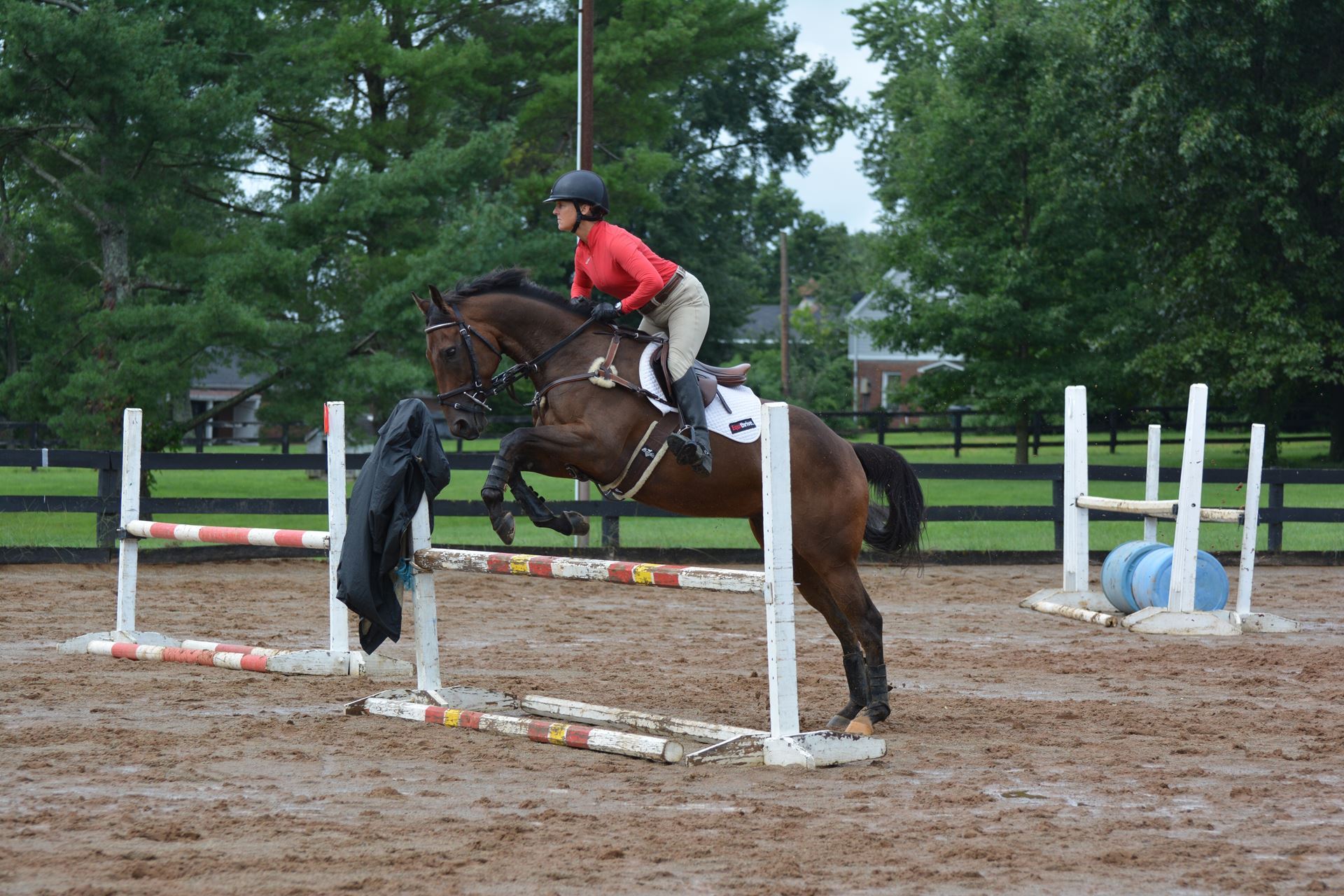
Martha Lambert. Photo by Erica Spradling
Hannah Hubsch and Martha Lambert were up next aboard their mismatched mounts, a tall Thoroughbred and Connemara pony. For Martha, Missy concentrated on keeping the connection and hind legs moving. Keeping the horse on the aids and maintaining connection helps the horse balance his body. If the horse loses balance in the turns, “finesse the reins and use a half halt,” Missy said.
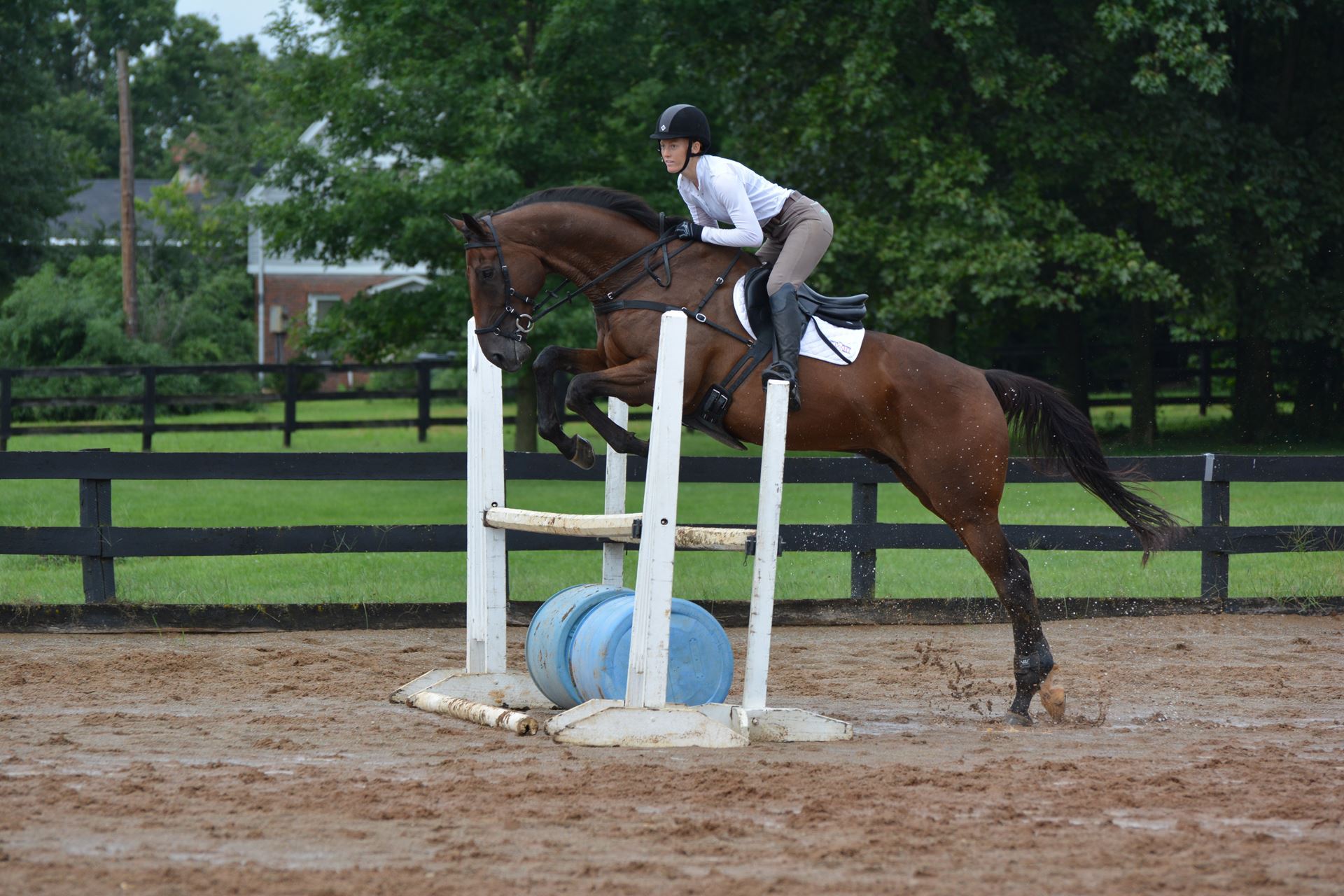 Hannah Hubsch. Photo by Erica Spradling
Hannah Hubsch. Photo by Erica Spradling
Missy really challenged Hannah’s position over fences, having her shift her hips more underneath her and forward. “That way, as you jump, you don’t have to move as much with your body,” she said.
With her tall and lean mount, Missy told Hannah “don’t get in a hurry to get to the jump with a big horse,” especially one with a lot of scope. Keep the rhythm of the stride you want and close your leg rather than using your upper body to meet a distance.
Novice
It was all about pace and energy for Bridgette Aickelin’s big grey gelding who would rather poke his way around the course. Missy worked on getting Bridgette to use more power while maintaining the same ground-covering stride, resulting in a steadier smoother round and scopier jumps.
With Megan Lynn, Missy emphasized her position to help Biggin’s jump. “Don’t throw your shoulders forward, he has to jump up to you”. Maintaining a firm lower leg in the last stride to the fence helped to keep the stride moving forward.
Photo credits: Kristen Janicki (Saturday), Erica Spradling (Sunday).
MSEDA would like to thank Missy Rasehousen for sharing her eventing expertise with all of the horses and riders.
For more information about MSEDA, go to www.mseda.org
